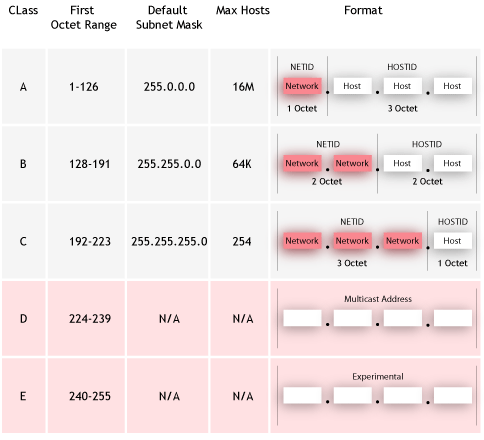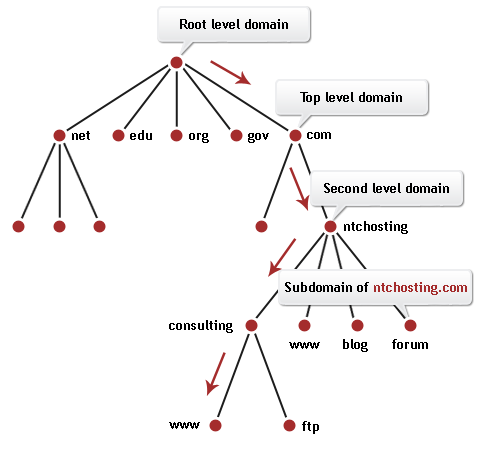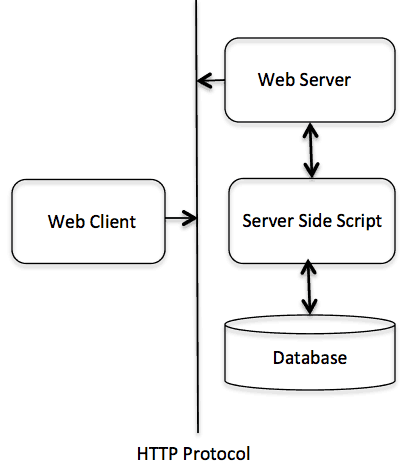- In information technology and on the Internet, infrastructure is the physical hardware used to interconnect computers and users. Infrastructure includes the transmission media.Infrastructure also includes the software used to send, receive, and manage the signals that are transmitted.
- In some usages, infrastructure refers to interconnecting hardware and software and not to computers and other devices that are interconnected. However, to some information technology users, infrastructure is viewed as everything that supports the flow and processing of information.
The Internet: Computer Network Hierarchy
Every computer that is connected to the Internet is part of
a network. For example, you may use a modem to connect to an Internet Service
Provider(ISP). When you connect to your ISP, you become part of their network.
The ISP may then connect to a larger network and become part of their network.
The Internet is simply a network of networks. DNS is an Internet service that
translates domain names/hostnames to IP addresses and IP addresses to their
associated domain names/host names. DNS helping each visitor refer to the
desired website only by typing its alpha-numeric name (domain name) in the
browser instead of its real numeric system name (IP address).
INTERNET PROTOCOL (IP)
- provides a common layer over dissimilar networks
- used to move packets among 'host' computers and through gateways
- IP add consist of 32 bit ( 4 octets of number from 0-255 represented in decimal form instead of binary form).
- IP add ==> 168.212.226.204
- binary form ==> 10101000.11010100.11100010.11001100
IP add consist of 2 part:
- identifying the network
- identifying the node/host

NETWORK CLASSESS
CLASS A
~Class A addresses are assigned to networks with a very large
number of hosts. The high-order bit in a class A address is always set to 0.
The next seven bits (completing the first octet) complete the network ID. The
remaining 24 bits (the last three octets) represent the host ID. This allows
for 126 networks and 16,777,214 hosts per network.
100.100.123.123
PREFIX/FIRST HOST

CLASS B
~Class B addresses are assigned to medium-sized to
large-sized networks. The two high-order bits in a class B address are always
set to binary 1 0. The next 14 bits (completing the first two octets) complete
the network ID. The remaining 16 bits (last two octets) represent the host ID.
This allows for 16,384 networks and 65,534 hosts per network.
100.100.123.123
PREFIX/FIRST HOST

CLASS C
~Class C addresses are used for small networks. The three
high-order bits in a class C address are set to binary 1 1 0. The next 21 bits
(completing the first three octets) complete the network ID. The remaining 8
bits (last octet) represent the host ID. This allows for 2,097,152 networks and
254 hosts per network.
100.100.123.123
PREFIX/FIRST HOST

CLASS D
~Class D addresses are reserved for IP multicast addresses.
The four high-order bits in a class D address are always set to binary 1 1 1 0.
The remaining bits are for the address that interested hosts recognize.
Microsoft supports class D addresses for applications to multicast data to
multicast-capable hosts on an internetwork.
CLASS E
- binary add start with 1111
- decimal number can be anywhere from 240 to 255
- used for experimentation.
never have been documented or utilized in a standard way

DOMAIN NAME SYSTEM (DNS)
- Internet service that translate domain names like www.hotwired.com into numerical IP add (204.62.131.129) which computer on the net use to communicate with each other
- Internet naming scheme which consist of a hierarchical sequence of names
- from the most specific to the most general (left to rigth),
- separate by dots (emoe.gov.my)
domain name are alphabetic (easeir to rememner)

INTERNET SERVICE PROVIDER (ISP)
- Short for Internet Service Provider, it refers to a computer access to the Internet. The service provider usually provides a software package,username and password. You can then log on to the Internet and browse the World Wide Web and send and receive e-mail. ISPs also serve large companies, providing a direct connection from the company's networks to the Internet. ISPs.
- An ISP is a company that provides individuals and other companies access to the Internet and other related services such as Web site building and virtual hosting. An ISP has the equipment and the telecommunication line access required to have a point-of-presence on the Internet for the geographic area served. The larger ISPs have their own high-speed leased lines so that they are less dependent on the telecommunication providers and can provide better service to their customers.
HTTP (Hypertext Transfer Protocol)
HTTP defines how messages are formatted and transmitted, and
what actions Web servers and browsers should take in response to various
commands. For example, when you enter a URL in your browser, this actually
sends an HTTP command to the Web server directing it to fetch and transmit the
requested Web page.
The other main standard that controls how the World Wide Web
works is HTML, which covers how Web pages are formatted and displayed.
HTTP is called a stateless protocol because each command is
executed independently, without any knowledge of the commands that came before
it. This is the main reason that it is difficult to implement Web sites that
react intelligently to user input. This shortcoming of HTTP is being addressed
in a number of new technologies, including ActiveX, Java, JavaScript and
cookies.
HTTP is connectionless: After a request is made, the client
disconnects from the server and waits for a response. The server must
re-establish the connection after it process the request.:-
- HTTP is media independent: Any type of data can be sent by HTTP as long as both the client and server know how to handle the data content. How content is handled is determined by the MIME specification.
- HTTP is stateless: This is a direct result of HTTP's being connectionless. The server and client are aware of each other only during a request. Afterwards, each forgets the other. For this reason neither the client nor the browser can retain information between different request across the web pages.


No comments:
Post a Comment